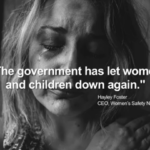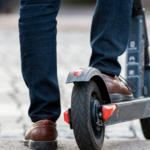Fears Parents Using an AVO in NSW to Discipline Children

AVOs are not just for adults.
Research commissioned by one of Australia’s largest community service organisations Uniting Care indicates that as many as three AVOs a day are being taken out against children, the vast majority of them for domestic violence incidents against their family members.
According to the research findings that were published in a media report, 1,090 children between the ages of 10 and 17 were served with an AVO in NSW last year.
These figures have raised concerns with a number of welfare organisations, which have questioned why parents are resorting to such extreme measures to control their teenage children.
AVOs as a form of discipline?
Domestic violence incidents perpetrated by children are believed to have risen by more than 50% over the last ten years, possibly as a reflection of the changing attitudes of society and reduced levels of respect for parents and authority.
The research commissioned by Uniting Care has revealed that although for some parents an AVO is considered a last resort, for others, taking out court orders against their children is just another way of handling normal teenage behaviour – conduct which could be better managed in other ways.
Is it right to stigmatise kids for behavioural issues?
The concerns raised by advocacy organisations like Uniting Care focus on whether or not it should be considered acceptable to stigmatise children for what is often a behavioural problem.
One of the main issues of concern surrounds parents taking out AVOs for behaviour like challenging parental authority and staying out late at night, rather than for violence and intimidation.
Depending on the terms of the AVO, kids who have an AVO taken out by one of their parents may not be able to live in the family home, and this can leave them vulnerable if they don’t have anywhere else to stay.
For a teenager who may already be vulnerable, this can cause significant hardship and steer them further away from the right path.
Taking out an AVO against children for behavioural problems doesn’t tackle the cause of the issue, or provide young people with the skills and tools they need to change their behaviour.
In the short term, the AVO might tell a child what to do and what not to do, but without the necessary tools to decide for themselves and learn more constructive ways of behaving in the future, it’s unlikely to help them in the long-term.
In cases of domestic violence in particular, kids who are violent at home have themselves often experienced domestic violence, and serving them with an AVO does little to treat the root of the problem.
Having said that, getting an AVO may be the only option for certain long-suffering and victimised parents.
How do kids’ AVOs differ from adult AVOs?
Although there are many similarities between child and adult AVOs, if a person under the age of 18 is subject to an AVO, the process is a bit different.
AVOs for people under the age of 18 are heard in the children’s court.
Children who are the subject of an AVO are entitled to free legal advice from Legal Aid.
A duty solicitor is available in the children’s court to provide legal advice and assistance to children who want to defend themselves against an AVO.
If a child is under the age of 16, an AVO can only be taken out against them by police.
This means that if they want to have the application against them dropped, they have to apply to police to do so.
This is similar to AVOs brought by police on behalf of a Person In Need of Protection (or ‘PINOPS’)
But it’s different to personal AVOs that can be applied for without the need for police interference.
Most AVOs taken out against children have the minimum conditions, which include not harassing or intimidating the alleged victim, and often require the child not to approach or contact them.
Much like with adults, AVOs can be taken out against children for a short-term period of a few months or for a longer period of time.
The penalties for contravening an AVO can be severe, and whereas an AVO is not technically a ‘criminal conviction’, breaching an AVO certainly is.
Over the last few years, AVO breaches committed by children have increased at the same rate as AVOs.
Having a criminal conviction for breaching an AVO can lead to further issues for children, including social alienation and stigmatisation.
It also has the potential of disadvantaging them into early adulthood before the conviction is ‘spent’ (deleted), which occurs 3 years after the offence was committed provided that the child remains ‘crime free’ for that period.
AVOs by children against children
Although domestic violence has been widely reported in the media, there are also a number of AVOs in NSW taken out by children to protect them from other children.
This can cause problems in schools, with teachers struggling to keep children apart so they don’t end up breaching the terms of their AVOs.
It can also lead to children with problematic social skills being further isolated from their peers, so they don’t have the opportunity to learn more positive ways of interacting.
Taking out an AVO against a child should never be taken lightly.
AVOs can lead to criminal charges if they are breached, and could disadvantage children who are already struggling.






